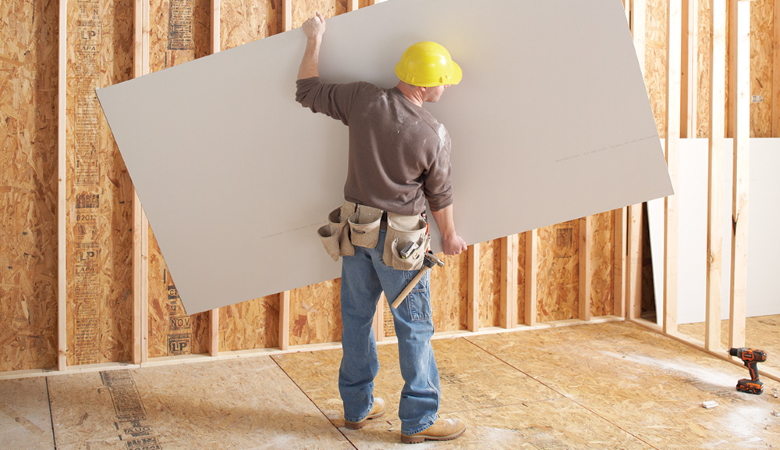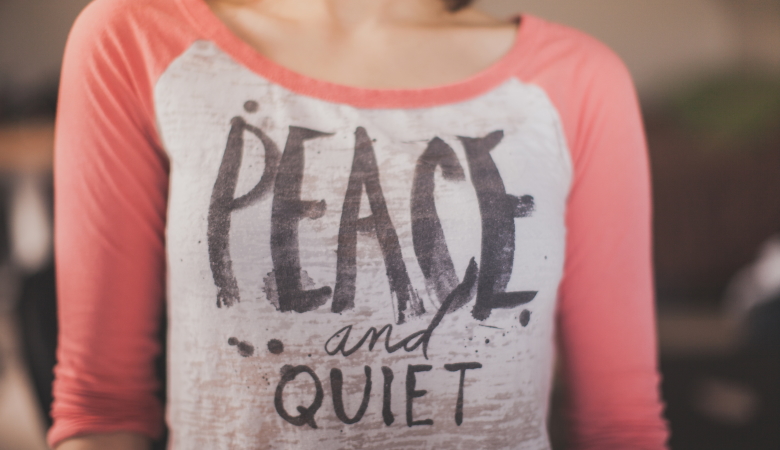
No matter the type of home you live in or the neighborhood, there’s a good chance that noise has been an issue at least once before.
Whether you’re looking to drown out some of the excesses sounds your neighbors make or reduce your own output, using drywall has been a popular way to do it for years now, especially choosing a soundproof specific product.
How do you install soundproof drywall?
First, you’ll need to determine the quality of the wall, and then find the right drywall product that has soundproofing capabilities.
Installation can be done easily and affordably yourself with just a few simple tools and some know-how, and the results can be astounding.
If you’re ready to deal with an ongoing noise issue or want to soundproof a room that you use for movies or music, drywall is a simple option.
We’ll walk you through the basics of this popular choice in wall panel, how it’s made, and the easy steps for installing it yourself at home so you too can benefit from the sweet relief of silence at home.
What Exactly is Drywall?

Drywall is a building material used to cover interior walls and ceilings, and it’s the most common application in modern homes and buildings.
Traditionally, walls were covered with plaster that was made of various materials like sand, lime, and even animal hair, and applied in a smooth paste to make interior walls.
When gypsum was discovered for its quick-drying abilities, it was added to the plaster, and eventually became the norm.
A drywall sheet or panel today consists of plaster in the middle and with thick sheets of paper and facer on either side, with some variants being additives that make the water-resistant or made with a higher density to block sound.
Drywall is sold in panels or sheets and it varies in thickness and materials. These sheets can be applied by builders and home DIYers as they can be easily cut down to the size needed and then stuck wherever needed.
Even those without experience in building and construction will usually be able to hang drywall, and it can be a quick fix to a soundproofing problem that you’ve been waiting to solve.
How Is Soundproof Drywall Made?

Drywall is the most common way to build an interior wall these days, and although this modern variant of timber and masonry is easier to install, cheaper, and lighter, it falls flat in the sound department.
However, manufacturers of drywall have heard the calls of builders and homeowners and developed panels that are better at keeping sound contained than others.
Soundproof drywall features different materials like polymer and noise control gypsum boards that are layered uniquely.
These sheets then dampen the sound waves that are sent through the walls and turn them into heat, as they cause vibrations and friction, and can then convert that friction into thermal energy.
To get this effect, a standard sheet of soundproofing drywall might feature a middle layer of polymer and then multiple layers of noise control gypsum on either side. These convert the sound waves into thermal energy, so whoever is on the other side gets a muffled version of the noise.
In some cases, it may be cheaper to install two or more layers of basic drywall with just as good of a result as the soundproofing type, but only if your sound requirements are moderate to minimal.
There are downsides to doing this though, like losing floor space, having to smooth out any bumps, added weight on the walls and ceilings, and more work, but this is only the case if you’re applying more than two layers.
The Correct Installation of Soundproof Drywall
Before you can go ahead and install your new layers of soundproof drywall in your home, you’ll first need to assess the area.
A few questions to ask would be: what type of drywall do you need, are you going to add any other layers of insulation or sound blocking, and how much of it is required to adequately do the job.
Once you have the sheets ready, soundproof drywall is just as easy to install as regular types. To start, you might want to add a layer of soundproofing insulation that can provide a further barrier against sound, as well as assist with insulation to keep temperatures regulated in your home.
Apply the drywall sheets one at a time but be sure to use the right screws to attach them to the studs. For metal studs, a fine threaded screw is best, and for wooden studs, a coarse threaded screw should be used.
If you have greater needs for soundproofing, you might use a special resilient channel that attaches to the studs of the wall, with the drywall then attaching to them.
Once everything has been screwed in, apply soundproof glue to seal up any cracks, seams, power outlets, and light switches, as sound can easily escape from areas like this. Cover with whatever finish you want, like plaster, and smooth it out before painting or covering as you choose.
Peace and Quiet in a Panel

No matter your noise issue, you’re guaranteed to get some relief when installing soundproofing drywall, provided you take your time doing the job right.
The simple addition of these panels can help with acoustics and reduce sound traveling, so no matter what side of the wall you’re on, you’ll notice an immediate difference in volume.
Related Questions
Drywall is a popular option for soundproofing an indoor area, whether you want to keep your noise in or someone else’s out.
There’s a lot to consider before you can dive into this DIY job, though, so we’ve answered some FAQs that can give you a push in the right direction to finding your perfect fit.
What is the Most Soundproof Wood?
If you’d rather use a wood panel than drywall to cover your interior walls, some perform better as a soundproofing solution than others. The best choices for a soundproofing wood for interior walls are acoustic plywood, cork, oriented strand board, and medium-density fiberboard.
How Can I Soundproof a Wall Cheaply?

In addition to soundproofing your walls with drywall, you can try some other affordable methods to reduce the noise at home. Adding area rugs, hanging acoustic panels, and hanging curtains and other window treatments will help reduce the noise output of a room as well as the sound that travels inwards.
Can You Install QuietRock Over Existing Drywall?
QuietRock is a brand of drywall with soundproofing abilities and it can be installed directly over existing drywall or on its own, whichever you prefer.
When installing on drywall that’s already in place, make sure you use adhesives that are specifically made for QuietRock as they help with the acoustics of each panel.
Is Soundproof Drywall Expensive?
The cost of soundproofing drywall is more than standard drywall because it’s been engineered specifically to convert sound to thermal energy.
These sheets cost between $40 to $200 for a 4 x 8’ sheet, compare to standard drywall which averages between $10 to $15 for the same size.
Resources
